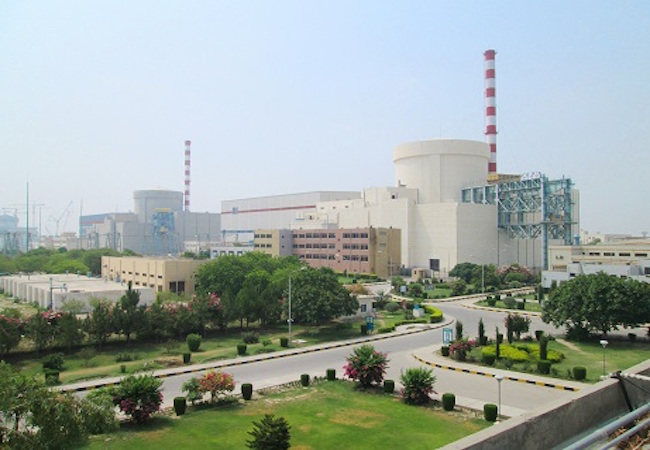
By Shahzadi Tooba Hussain Syed
Currently, energy demand in Pakistan during summers is 18000 MW and supply of power is 13000 MW, which cause 5000 MW of gap in the demand-supply chain whereas nuclear contribute 700 MWs to the overall electricity generation. It is estimated that in next 10 years the demand will grow exponentially making the current demand to twice of present level. Nuclear option can be best employed to meet the future challenges of demand in Pakistan.
Pakistan has three operational nuclear power plants, KANUPP-1, CHASMA-1 and CHASMA-2, which are the main contributor to the national grid. Independent Power Plants (IPPs) are producing 37.9 percent of electricity in Pakistan. On the other hand, Pakistan Atomic Energy Commission (PAEC) is only contributing 3.2 percent of electricity in the overall power production in Pakistan. So, the question arises here is whether Pakistan has the potential to explore the nuclear energy to end its unending power crisis or it is expecting much more (unrealistic) ?
Article IV of the NPT acknowledges the inalienable right of NNWS to research, develops, and uses nuclear energy for non-weapons purposes. It also supports the fullest possible exchange of such nuclear-related information and technology between NWS and NNWS. Right now, Pakistan is building its fifth nuclear power plants KANUPP-2 (1100 MW) at Karachi. Pakistan has also completed the construction work of CHASMA-3 (C-3) and CHASMA-4 (C-4), which will start pouring 655 MW of electricity into the national grid till 2016.
Nuclear Power Plants in Operation| Power Plant | Capacity (MW) | Year of Commissioning |
|---|---|---|
| KANUPP-1 | 137/100 | 1972 |
| CHASMA-1 | 325 | 2000 |
| CHASMA-2 | 325 | 2011 |
| Power Plant | Capacity (MW) | Year of Commissioning |
|---|---|---|
| KANUPP-2 | 1100 | - |
| CHASMA-3 | 325 | 2016 |
| CHASMA-4 | 325 | 2017 |
Pakistan Atomic Energy Commission has presented a vision “Nuclear Vision 2050”. This vision envisages greater than 40,000 MW nuclear power by 2050 or about 15% of the projected capacity of the country. The per megawatt cost of installing a nuclear power plant was higher than other sources, but once completed it is one of the cheapest sources of power.
The PAEC needed nearly Rs15 billion during the current fiscal year to fast track work on Chashma nuclear power plants. For the next fiscal year, the Commission also needed nearly Rs200 billion for completing work on K2 and K3 nuclear power plants. The K2 and K3 are scheduled to be completed by 2022 and 2023. Dr Anser Parvez said that work on five more plants of 1,100MW each would commence in next 10 years.
Nuclear power plant development in next 17 years can produce 7370 MW of energy and the expansion of nuclear power plants till 2030 will enable the country to raise nuclear power level from 750 to 8,800 MW.
Pakistan is long being denied by its legitimate right of acquiring nuclear technologies to expand its civil nuclear program. China has cooperated with Pakistan to construct nuclear plants in Pakistan. Pakistan is facing discriminatory standards at international level to have civil nuclear technologies. On other hand, India is being benefited by Indo-US nuclear deal through 123 nuclear agreements at various levels e.g. a special waiver was given to India to enter into Nuclear Supplier Group (NSG) and country specific International Atomic Energy Agency (IAEA) safeguards.
Moreover an American think tank, Nuclear Threat Initiative (NTI) has released its comparative nuclear security indexation encompassing worldwide nuclear material security. This study has assessed Pakistan as the ‘most improved’ country among nine nuclear armed states. The white house has acknowledged in the way like “Pakistan is engaged with the international community on nuclear safety and security issues and is working to ensure its strategic export controls are in line with international standards.”
Although, no one can deny the fact, other sources of energy are also reliable, but expansion in the existing nuclear infrastructure can bolster and foster its aims to end the power crisis. Right now, to end the energy crisis in Pakistan seems to be not plausible, but the future investment on nuclear infrastructure can reduce the power crisis.




